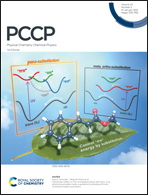An efficient kinetic Monte Carlo to study analyte capture by a nanopore: transients, boundary conditions and time-dependent fields
Abstract
To better understand the capture process by a nanopore, we introduce an efficient Kinetic Monte Carlo (KMC) algorithm that can simulate long times and large system sizes by mapping the dynamic of a point-like particle in a 3D spherically symmetric system onto the 1D biased random walk. Our algorithm recovers the steady-state analytical solution and allows us to study time-dependent processes such as transients. Simulation results show that the steady-state depletion zone near pore is barely larger than the pore radius and narrows at higher field intensities; as a result, the time to reach steady-state is much smaller than the time required to empty a zone of the size of the capture radius λe. When the sample reservoir has a finite size, a second depletion region propagates inward from the outer wall, and the capture rate starts decreasing when it reaches the capture radius λe. We also note that the flatness of the electric field near the pore, which is often neglected, induces a traffic jam that can increase the transient time by several orders of magnitude. Finally, we propose a new proof-of-concept scheme to separate two analytes of the same mobility but different diffusion coefficients using time-varying fields.



 Please wait while we load your content...
Please wait while we load your content...